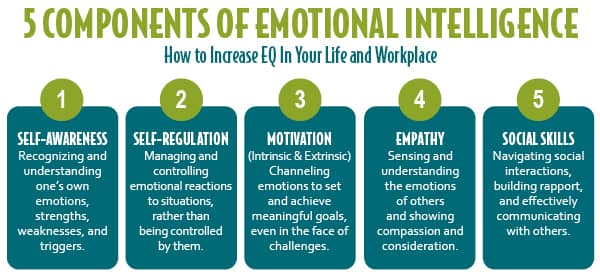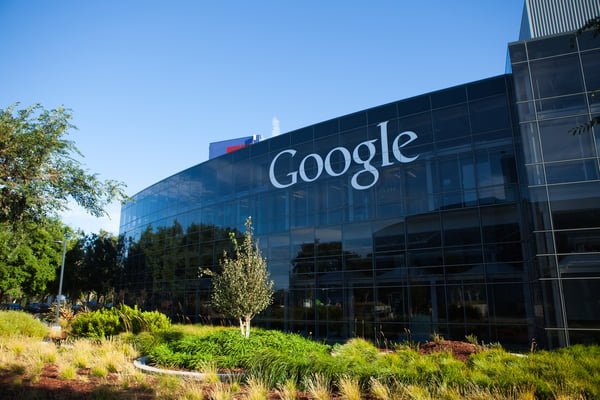Emotional Intelligence is like a theory on the brink of stardom. Over the past two and a half decades, the social theory has become one of the biggest buzzwords in fields like psychology, children’s education and business. From McDonald’s to the Dalai Lama and Harvard Business Review, organizations across the political and economic spectrum are diving into Emotional Intelligence (aka Emotional Intelligence Quotient; EQ for short). The history of emotional intelligence is less known but nonetheless fascinating.
Estimated reading time: 7 minutes

To understand more about the theory of Emotional Intelligence and social consciousness, you can read our explanation: What is Emotional Intelligence?
But where did this EQ theory come from and what will it do to the business world?
This examination of EQ in the workplace looks back to the very beginning when two friends coined the term while painting. From there, we’ll follow the course of Emotional Intelligence over the past twenty-seven years through healthcare, education, and, more recently, in business.
Today, EQ is one of the top business topics in publications like Fast Company and Forbes. We can look even further, too.
Emotional intelligence research is more and more in demand as people get curious about this expanding trend. More and more researchers are projecting forward to the potential EQ will have well into the 21st Century business sphere.
EQ Is Everywhere Now, Influencing Every Aspect of Business
There’s a common theme running through business writing since the mid-1990s. With slight variations, the gist is this: know yourself and you can control the world. Take these excerpts, for example:
“Google engineer Chade-Meng Tan decided he no longer wanted to feel like a cog in the great machine, and set out to create a program that would train people to be more mindful in their lives, train people to become more aware of their emotions, more compassionate toward others, more able to build sustainable relationships, and, ultimately, able to contribute to world peace.”
“The authors introduce...a set of skills hypothesized to contribute to the accurate appraisal and expression of emotion in oneself and in others, the effective regulation of emotion in self and others, and the use of feelings to motivate, plan, and achieve in one's life.”
“Leaders therefore need to shift the focus from the self to a universal sense of common purpose in order to address challenges...leaders need to embrace the importance of sleep, nutrition and exercise, and understand ways of keeping their physical bodies in harmony with their mind, emotions, and the world at-large.”
“The ability to sense, understand, and effectively apply the power and acumen of emotions as a source of human energy, information, trust, creativity and influence….to create real-world results.”
 Every single one of these business articles is articulating the same fundamental idea: understanding emotion can have massive, real-world results. Considering how widespread the sources are proves how broad the reach of EQ is across the modern work world.
Every single one of these business articles is articulating the same fundamental idea: understanding emotion can have massive, real-world results. Considering how widespread the sources are proves how broad the reach of EQ is across the modern work world.
These snippets—from a 2015 Fast Company article, a 1990 research paper, a recent thesis from a South African university, and a pamphlet for QMetrics business solutions—have drastically different authors, audiences, styles and purposes. But they do have EQ in common and are all woven intricately into the history of emotional intelligence.
Related reading: "Increase Your EQ! Best Books and Podcasts on Emotional Intelligence."
The Global Rise of Emotional Intelligence
Since the 1995 publication of Daniel Goleman’s international bestseller Emotional Intelligence, Why It Can Matter More Than IQ, a global movement has developed to bring “EQ” into practice in businesses, schools, and communities.
From American Express to Avon, organizations have begun to embrace the concept, while Harvard Business Review calls it “the key to professional success.” Schools, hospitals, and government agencies world-wide are adopting EQ practices—elementary students to army officers are now benefiting from curricula that prioritize emotional awareness.
Leaders in the EQ field, including Goleman, Salovey, and others, have shared best practices and current research at global conferences, further amplifying the reach and evolution of the movement. As Goleman points out, emotional intelligence is not just an American trend—it’s a worldwide phenomenon, influencing industries and cultures on nearly every continent.
The growth of EQ has been anything but isolated.
Despite practitioners sometimes feeling alone in their workplaces—whether in a hospital, school, or business—they are part of a virtual global community all working toward the same goal: integrating emotional intelligence into everyday life and work.
So, Who Came Up with Emotional Intelligence?
People who hear about this theory often ask, "Who created emotional intelligence?" or "Who developed EQ?"
“Emotional Intelligence” was not yet a thing when social psychologists Peter Salovey and John Mayer met one day in the summer of 1987 to paint the walls of Salovey’s house. As the two painted they talked about their research into thought, feelings, and behavior. The consensus they came to, unhappily, was that accepted theories of intelligence did not consider emotion. So, they created a new theory.
In what is now considered to be the landmark article on EQ, Salovey and Mayer launched their theory of this new type of intelligence in 1990 in the scholarly journal Imagination Cognition and Personality, titling it “Emotional Intelligence.”
The original definition of EQ, launched 25 years ago by Mayer and Salovey (who is now Yale’s 23rd president), is this: "a form of social intelligence that involves the ability to monitor one's own and others' feelings and emotions, to discriminate among them, and to use this information to guide one's thinking and action.”
Not until the mid-1990s did this theory actually break into society’s collective consciousness, though. Largely thanks to a New York Times science writer named Daniel Goleman, the idea of EQ spread quickly throughout the following decade.
Goleman, who fixated on Salovey and Mayer’s work, refined the theory into a neat package. Working with Harvard psychologists unhappy with the standard definition of cognitive intelligence, Goleman wrote his own book titled Emotional Intelligence. It’s in Goleman’s premier book that we find the first instance of EQ applied to the business world.
Beyond defining the four characteristics of emotionally intelligent people—self-awareness, self-management, social awareness, and social skills (see below)—Goleman argued that business success requires emotional intelligence even more than cognitive intelligence.

Goleman catapulted EQ into the realm of business twenty years ago, and since then, the theory has grown unusually fast. EQ is in the vernacular of CEOs and managers, but it is still relatively a young theory with immense potential to grow.
Studies Show that EQ Brings Businesses Success
Judging by numbers alone, you wouldn’t guess that Emotional Intelligence is such a young theory. For an idea younger than the children of most managers who use it, EQ has some significant data backing it already.
For business examples, look to McDonald’s, L’Oreal, and even the U.S. Government. A European supplier for McDonald’s underwent a three-year study and realized that emotional intelligence was the largest deciding factor in managers' performance scores.
L’Oreal attributes a $2,558,360 increase in net revenue to selecting more emotionally intelligent sales agents. The US Air Force claimed a savings of $2.7 million in recruiting costs in 2003 by using an EQ profile. And Sheraton Studio City in Orlando increased its market share by 24 percent after a year-long EQ program in 2003.
 There is no shortage of businesses actually built on EQ either. At least seven different thriving EQ testing companies now work with Fortune 500 companies. At Google, thousands of employees are waitlisted for the company’s EQ program, Search Inside Yourself Leadership Institute, which drew 1,500 participants back in 2015 and endorsements from the Dalai Lama and President Jimmy Carter.
There is no shortage of businesses actually built on EQ either. At least seven different thriving EQ testing companies now work with Fortune 500 companies. At Google, thousands of employees are waitlisted for the company’s EQ program, Search Inside Yourself Leadership Institute, which drew 1,500 participants back in 2015 and endorsements from the Dalai Lama and President Jimmy Carter.
Even international media have numbers to prove EQ’s clout: Fast Company’s EQ article 7 Habits of Highly Emotionally Intelligent People was the most-read business article for the year it was published.
Connecting EQ to Everyday Life
Businesses are obviously adopting EQ theories and getting results, but these are just the first trials.
If you review every article on EQ cataloged by the Yale Center for Emotional Intelligence, the 25-year-old institution founded by EQ inventor Peter Salovey himself, you might get halfway through the database before anything workplace related appears. 
From the beginning, Emotional Intelligence was applied to psychology, education and healthcare, but the workplace has been slower to adopt EQ.
Perhaps this is because businesses, so dependent on numbers and chains of command, take longer to accept change without quantitative evidence that it will increase return on investment.
While the Google engineer who developed the company’s Search Inside Yourself Leadership Institute, Chade-Meng Tan, saw a clear correlation between mindfulness and company success, that view is still relatively new. Instead of honing in on business applications, researchers turned to what they knew: education and healthcare.
Related reading: "27 Best Ways to Raise Emotional Intelligence in the Workplace."
Emotional Intelligence Finds a Home in Global Education
While the business world is beginning to fully embrace emotional intelligence, schools across the globe are also taking active steps to weave EQ into their fabric. From South Africa to Indonesia and classrooms in between, educators are increasingly convinced that understanding emotions is as crucial for students as mastering their multiplication tables.
Why the shift?
Research consistently shows that emotional intelligence programs—often called social-emotional learning (SEL)—aren't just feel-good exercises. SEL initiatives are linked to measurable improvements in student achievement, well-being, and the overall learning environment.
For instance, a landmark study by the UK’s Ministry of Education observed that schools led by emotionally intelligent principals saw clear upticks in student performance. When school leaders foster positive relationships and model emotional awareness, teachers become more motivated and effective, directly impacting how—and how well—students learn.
But the influence of EQ reaches beyond just academic scores or classroom behavior; it's helping students navigate the real world. Schools that build emotional intelligence into their curriculum often report fewer incidents of bullying, violence, and risky behavior, as well as stronger peer relationships and greater resilience.
The research powerhouse CASEL (Collaborative for Academic, Social, and Emotional Learning) has compiled a mountain of evidence: students exposed to ongoing social intelligence training not only feel more connected to their schools but also achieve higher academically.
Teachers are noticing the difference, too.
In districts where EQ is a staple, educators report greater cooperation, better student focus, and healthier classroom climates.
In short, emotional intelligence isn’t just another educational buzzword—it’s fast becoming a core competency, shaping the next generation of learners to thrive both inside and outside the classroom.
Recommended reading: "27 Ways to Raise Emotional Intelligence in the Workplace."
The Background of Emotional Intelligence
The first title in Yale’s database is “Some Effects of Mood on Clinicians’ Memory,” a very unclear study published in 1988. From there, EQ was applied to jealousy, cancer treatments, and even how likely patients were to volunteer for mammograms or apply sunscreen.
In 1997, Salovey began linking EQ to education and children’s early cognition, but it wasn’t until 1999 that a scholarly research article addresses EQ in business. In that study, one insurance company found a direct correlation between its customer service representatives’ MSCEIT (an EQ test) scores and their effectiveness (Rice, 1999).
Slowly, researchers probed into the topic.
In 2001, Salovey’s Regulating Emotions to Become Healthy, Wealthy, and Wise linked EQ to finances. His 2003 Social, Emotional and Practical Skills applied EQ to everyday life and job skills. And in 2004, Marc Brackett’s Emotional Intelligence and Its Relation to Everyday Behaviour assessed how college students assimilate to the “real world.”
Related reading: "Create Success and Happier Customers with Empathy Statements in Customer Service."

While academic researchers gradually probed into the business field, the New York Times reporter Goleman and one other businessman, Chris Golis, spearheaded the effort to get EQ into the workplace.
Though Goleman is more widely known, Golis’ work is the most relevant example of EQ in the work world. Golis drew inspiration from industry legend Charles Handy, a businessman whose “views on organizational development and leadership have helped usher in a more humanitarian style of management” and gave management “a philosophical elegance and eloquence that was missing from the field.” (Sounds a lot like EQ, doesn’t it?)
Empathy Selling, Golis’ brainchild, is a business-oriented course to help managers and workers understand their own personalities in order to connect with clients. This, more than any scholarly research or even Goleman’s own work, is the first practical application of EQ in the workplace.
Today, over 15 years after Golis first published Empathy Selling, his same idea is at the heart of Google’s revolutionary Institute, EQ trials at McDonald’s and even the U.S. Air Force. Slowly, Salovey’s ideas, scholarly research and business experiments are all coming together.
The result is a workforce that uses EQ, delivers measurable results, and proves that this psychological theory has practical relevance.
Golis captured the idea precisely when he used this quote to explain EQ to an Australian Business Conference:
"The real voyage of discovery consists
not in seeking new landscapes,
but in having new eyes."
~Marcel Proust
How EQ Will Change the Working World
Whether you are a wholehearted believer, a skeptic or a staunch opponent to EQ in the business sphere, we all have to wonder: if this progress continues and EQ does become commonplace in companies...what will that look like?
The answer might be a Fourth Industrial Revolution, according to some current scholars. A business world marked by mindfulness, contextual awareness and intelligence beyond the traditional IQ.
“Civilisation finds itself at the dawn of a revolution considered to be the Fourth Industrial Revolution (4IR). The introduction of new business models, the disruption of sectors and the reshaping of socio-economic systems are all evidence of the profound changes taking place across all industries, unlike previously experienced in history,” writes Dr. J.H. Oosthuizen of Milpark Business School. “If leadership is about influencing others to accomplish common objectives and directing an organization in ways to achieve cohesiveness and coherency...the question then beckons, how should it be done to navigate 4IR?”
Oosthuizen’s solution meets with Salovey, Goleman, Golis and the growing number of companies embracing EQ:
“In order to be creative and better equipped for agility and resilience in this age of persistent and acute change, able to manage the disruptions and resources in restricted times, leaders require high levels of emotional intelligence and the capacity to cultivate it. Leaders therefore need to shift the focus from the self to a universal sense of common purpose in order to address the challenges and securing the benefits of 4IR.”
That shift might come through more independent trials like L’Oreal’s, inside programs like Google’s or programs like Golis’ Humm Handbook, the Six Second Emotional Intelligence Network, Essi Systems’ EQ Map, or the brand-new BarOn EQ-i test. Whatever the pathway, the trend is clear: EQ is working its way into the business world.
Twenty-Seven Years after Emotional Intelligence Was Published…
Salovey and Mayer’s theory is still fledgling. The body of practical evidence proving EQ works in businesses is growing, and slowly academic research is extending into the working world.
“Leaders need to embrace the importance of sleep, nutrition and exercise, and understand ways of keeping their physical bodies in harmony with their mind, emotions, and the world at-large,” writes Oosthuizen, hearkening back the Salovey and Mayer’s original thesis, the origin of EQ.
Emotional Intelligence, from the beginning, is defined as: “the effective regulation of emotion in self and others, and the use of feelings to motivate, plan, and achieve in one's life.” One could hardly imagine a better business plan.
Real-World Impact: EQ in Action
While the academic base continues to mature, the business world isn’t waiting. A growing roster of organizations—ranging from American Express and Unilever to Pfizer, Hilton, and Johnson & Johnson—are increasingly turning to emotional intelligence to fuel organizational performance. The evidence is not just anecdotal; it’s measured in bottom-line results and real-world outcomes.
Consider these examples:
- L’Oreal: Sales agents selected for emotional competencies contributed an annual net revenue increase of $2.5 million.
- US Air Force: By incorporating EQ profiling, the Air Force saved $2.7 million in recruiting costs.
- Sheraton Studio City Orlando: A year-long focus on EQ improved guest satisfaction, reduced turnover, and increased market share by 24%.
What ties these successes together is the understanding that emotions drive people—and people drive performance.
As Daniel Goleman notes, EQ defines our capacity for relationship, a quality that amplifies results from individual interactions all the way up to entire organizations.
In Primal Leadership, Annie McKee recounts the story of a leader in UNESCO South Asia who leveraged emotional intelligence to inspire her staff and transform what could have been “just a job” into a mission with far-reaching impact.
This kind of leadership, rooted in emotional efficacy, doesn’t just inspire commitment—it delivers outcomes.
The cumulative weight of these cases points to a simple truth: integrating emotional intelligence into the fabric of business isn’t just a trend. It’s steadily proving itself as a catalyst for greater agility, creativity, and resilience in an ever-evolving corporate landscape.
Looking for business solutions?
To learn more about Heartmanity's emotional intelligence training and programs for businesses and how to apply emotional intelligence in leadership, please email jennifer@heartmanity.com or check out EQ programs at Heartmanity for Business.
Resources used in this article:
7 Habits of Highly Emotionally Intelligent People (Fast Company)
Building the Emotional Intelligence of Groups (Harvard Business Review)
The Emotional Intelligence Course by Peter Salovey and Mayer (online resource)
The Humm Handbook by Chris Golis
Inside Google’s Insanely Popular Emotional Intelligence Course (Fast Company)
Management Theory of Charles Handy by Jeanne Dininni (Business.com)
Working with Emotional Intelligence by Daniel Goleman (full text of Google Books)
Tests: SIx Second Emotional Intelligence Network, BarOn EQ-i test, Essi Systems’ EQ Map.








